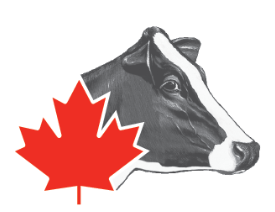
Source: Holstein Canada, info Holstein May/June 2016
Dairy producers strive for improved performance with each passing year and each successive generation on their operation. There are many ways to pursue this outcome, but for the purpose of this article we’ll categorize them as either management (affecting the cows’ environment) or genetic. Improvement can come from either category, but the amount of improvement seen in the performance of the next generation varies by trait and its heritability
Heritability is a term used to estimate the amount of performance (phenotypic) variation in a population that can be attributed to the genetic variation within the same group of animals. Remember that performance outcomes are the result of the animal’s genetics AND its environment.
PHENOTYPE = GENOTYPE (BREEDING) + ENVIRONMENT (MANAGEMENT).
Sometimes written as h2, heritability can be expressed as a percent or decimal. In dairy, production traits tend to be the most heritable, functional (health and fertility) the least heritable, and conformation trait heritability is in between. Using the Milk Yield trait that is 43% heritable, we could assume that the average cow’s milk yield is 43% the result of her genetics and 57% the result of the herd management and her environment.
For producers looking to improve their genetic potential for production, the moderately high heritability means that they can make significant progress quickly. The opposite is also true; mating cows to inferior sires will affect the progeny production performance more drastically than for other traits in a single generation.

The Health Challenge
A quick look at a selection of functional trait heritabilities (Table 1) reveals that on-farm health and fertility performance is often 80-90+% contributable to herd management. Genetic improvement for these traits is significantly slower than for production or conformation traits.

Does that mean selecting for health and fertility is futile? Certainly not.
Genetics are additive and permanent, meaning that the genetic outcomes of the breeding decisions you make today, will be transmitted for generations to come. A feed ration compromised by poor storage will certainly affect a herd, but the issue can be fixed with a new harvest of silage and the performance of the herd should improve accordingly; the past ration and spoiled feed forgotten. Unlike feed rations, breeding decisions will result in offspring that receive genetic gains, or genetic declines, from their parents. These genetic results cannot simply be reversed. Any given animal will transmit half of their genetics to their progeny and consequently transmit, on average, one quarter of their genetics to the offspring of their progeny (see image).

Let’s take a look at how a low heritability trait, like Daughter Fertility, can play a role in cow performance. Between the top 5 and bottom 5 bulls, ranked by Daughter Fertility, with 1000+ daughters in their proof, there is a significant difference in their RBV and the reproductive performance of their progeny (Table 2). These differences can be achieved through generations of breeding.
TABLE 2
Average Daughter Performance for the Top 5 and Bottom 5 Sires for Daughter Fertility with Greater than 1000 Daughters:

Sound management will certainly pay dividends. This is especially true for health and fertility performance. At the same time, striving for genetic improvement in traits that have lower heritability takes time, but the incremental improvements and their additive results from generations of breeding can amount to significant genetic progress, further enhancing performance. Who wouldn’t want to cut more days off their herd’s average days open?!







